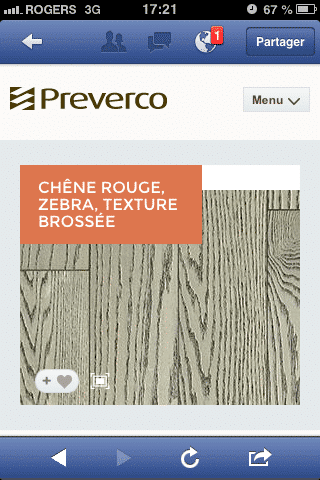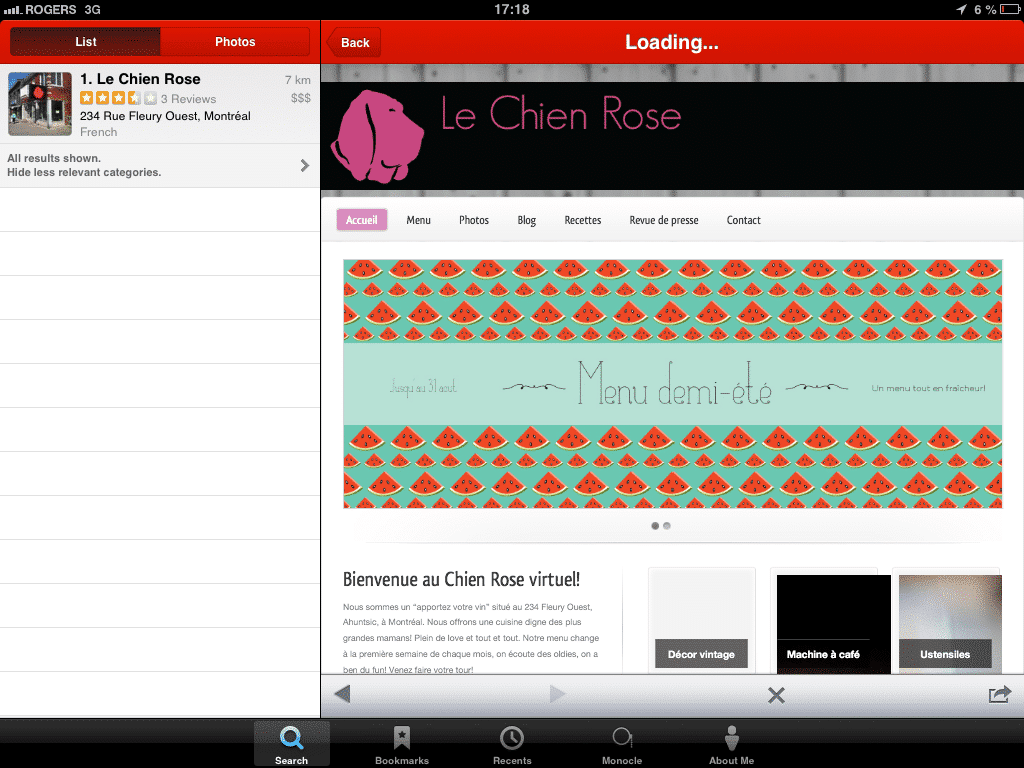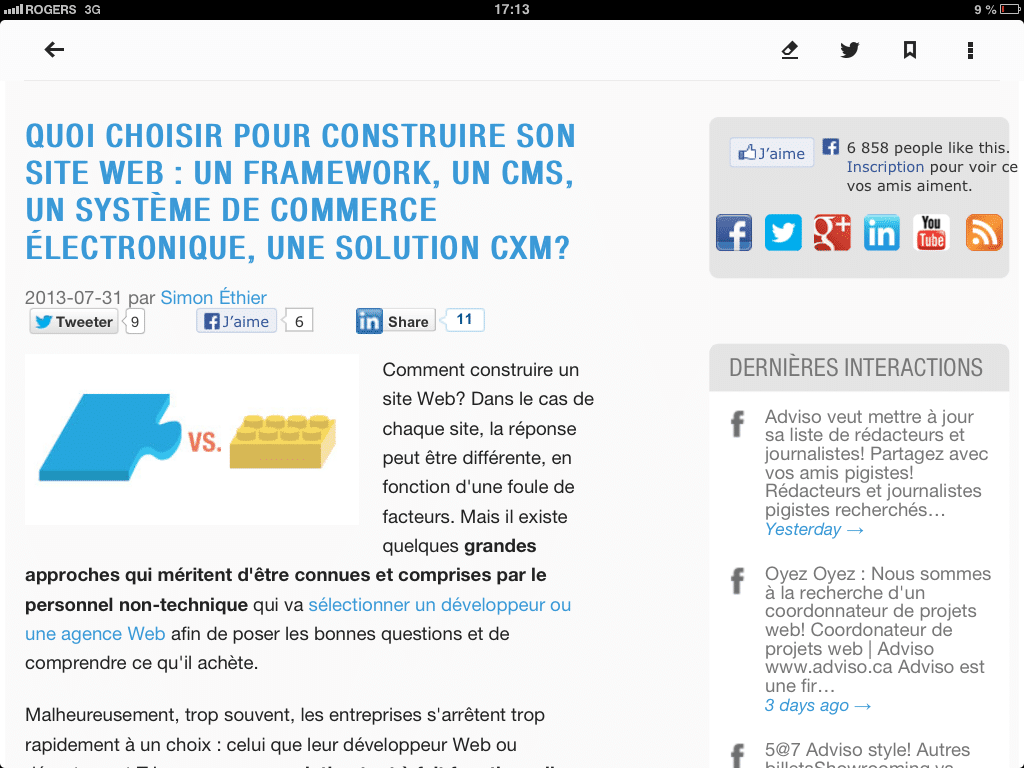Executive IT Advisor and Privacy Officer
Designing Websites with Safari (In-App) in Mind: The Browser Embedded in iOS Apps
Executive IT Advisor and Privacy Officer
 If you use an iOS device (the OS still generating, even 2 years after our article, 70-80% of mobile web traffic in Canada), you have probably already used, without necessarily realizing it, web browsers embedded in the iOS apps, when you click an external link in several popular apps:
If you use an iOS device (the OS still generating, even 2 years after our article, 70-80% of mobile web traffic in Canada), you have probably already used, without necessarily realizing it, web browsers embedded in the iOS apps, when you click an external link in several popular apps:
We find among others one in Facebook when you click on an external link (note that the browser is in the colors of Facebook, and keeps the header of the application):

But also in several other popular applications:
YELP
(very useful for viewing a restaurant's website or menu while keeping the search results handy on the left):

FEEDLY
(essential to return to your list of articles to read after enjoying an article):

SAFARI (IN-APP) OR UIWEBVIEW FOR INTIMATES (DEVELOPERS)
Depending on whether you are called Apple or Google, you give different names to this view, which is actually a method used by developers to provide access to web content via their application. In Google Analytics, these visits are separated from those coming from Safari and other browsers:
-png.png)
Increasingly, Safari (In-app) is taking a greater proportion of visits as mobile traffic increases. Note also that on several sites, Safari (In-app), alone, causes many more visits than the Android browser , despite the popularity of these devices (highly purchased, but generating little total traffic).
LITTLE TIPS TO LOOK GOOD ON THE SAFARI BROWSER (IN-APP)
(And most other nested browsers.)
CREATE A PAGE PER IDEA (REMEMBER THE CONCEPTUAL MODEL OF YOUR SITE )
In particular in this kind of process, the site visitor seeks to consult very specific content, which must have a dedicated page: we do not want him to search for nothing.
DESIGN THE SITE IN ADAPTIVE DESIGN ( RESPONSIVE ) , TO MANAGE ALL SCREEN SIZES
We don't want to waste too much time individually optimizing for a fashionable screen size, which won't be fashionable next year. And of course, Photoshop is avoided for the web layout .
Imagine the nested browser in the right column of the Yelp app on iPad. On iPad Mini. Imagine that next month Apple releases a new iPad and Yelp changes its layout: are you ready?
PLAN THE CONSULTATION OF THE PAGE WITHIN A MORE GLOBAL TASK
Your content probably only affects one component of a more complete activity (ex.: shopping for a product, going to a place, etc.) Your site is not an experience that you impose on the customer: it the latter decides on the experience, and usually it starts in his favorite applications, the ones he uses every day.
FACILITATE SHARING WITHOUT HINDERING CUSTOMER RESEARCH
The customer is in a process that we want to avoid hindering, but if he sees content he likes, he should be able to share it without… leaving the browser and then the application he is using. The use of "like" and like buttons is indicated, and using the "real" social sharing buttons guarantees better compatibility (and several other benefits that Thoma explains better than me in his article).
APP OR MOBILE WEB? WEB FIRST, APP SECOND
At the eCom Montreal 2012 show, I explained that it was usually better to create a website accessible on mobile first, then an iOS application (if you are a company that wants to launch its first mobile initiatives), and the use of nested browsers like Safari (In-app) makes this recommendation even stronger: one can view web content through an app, but the reverse is not true: creating a web version first will maximize your chances of being viewed , and an application can then add additional value.
IT'S A DETAIL? NOT QUITE!
Although I don't have detailed statistics aggregating a large number of sites, when I see that visits via Safari In-App make up 3.4.5% of a site's total traffic , this trend is hard to ignore… especially with the explosion of mobile and tablet traffic which often reaches 20, 25, even 30% of the traffic of certain major sites (ComScore says 40 to 45% for certain leaders in the United States): for certain sites, a visit out of four on mobile/tablet come from an application other than the device's browser.
I also note that on certain Quebec sites in 2013, if we count Safari (In-App), Safari has supplanted IE or FF as the 3rd most used browser to reach a site.


.png)

-3.png)




